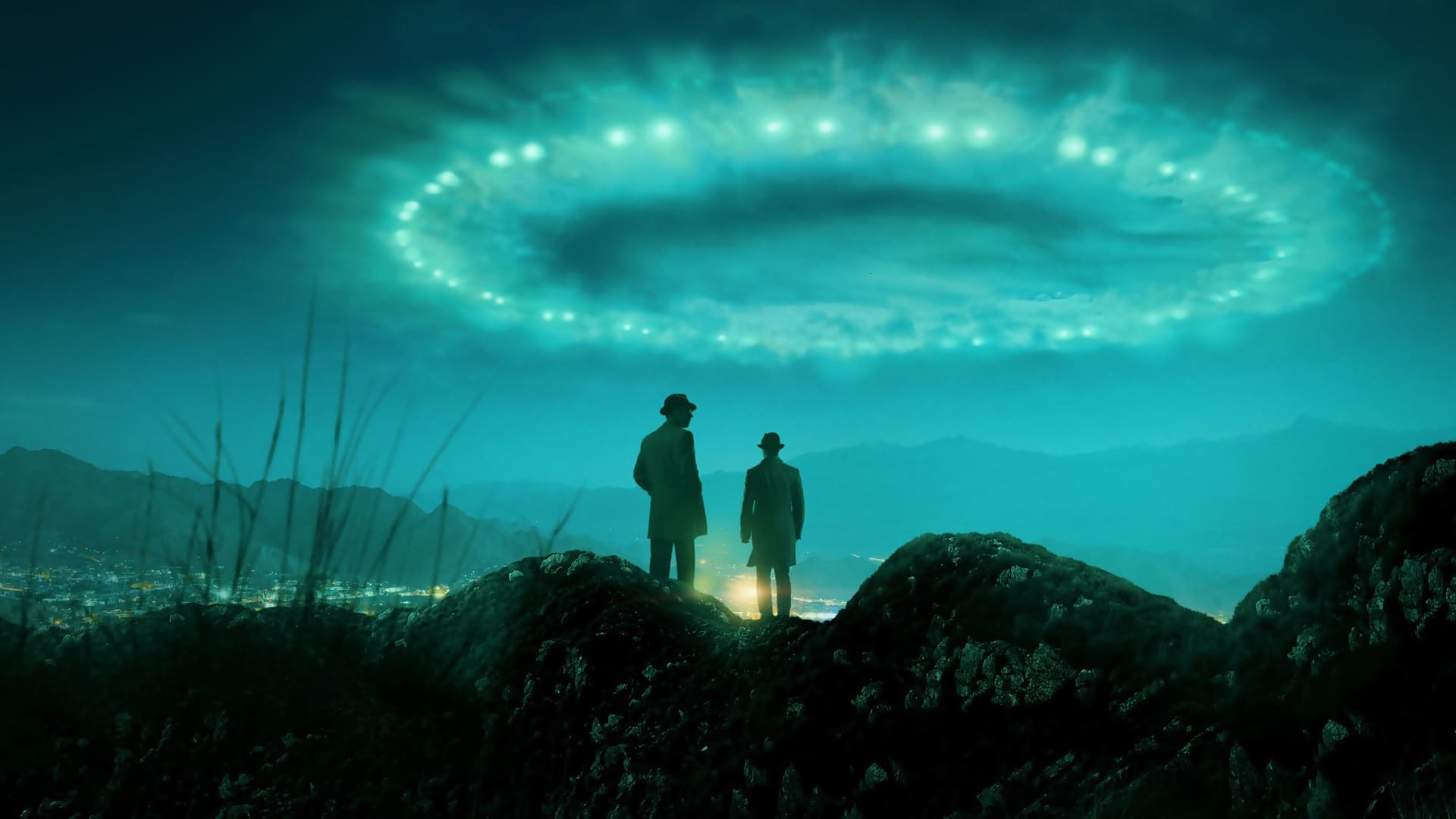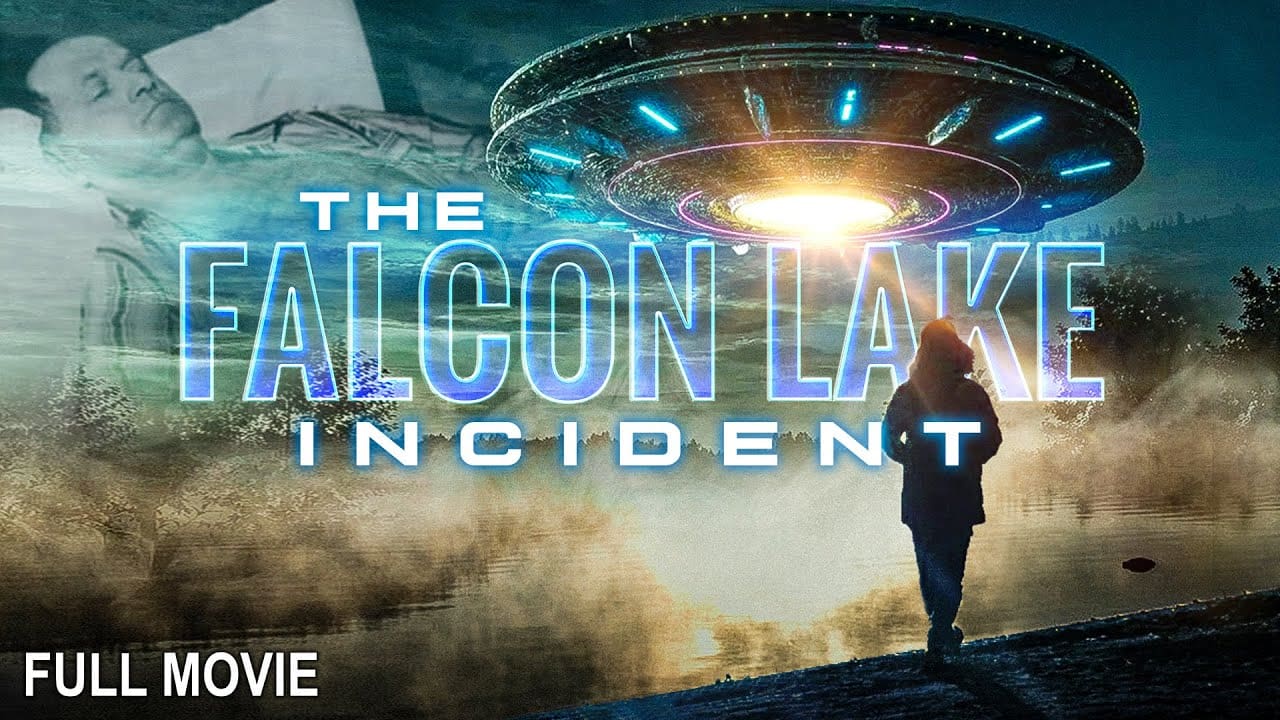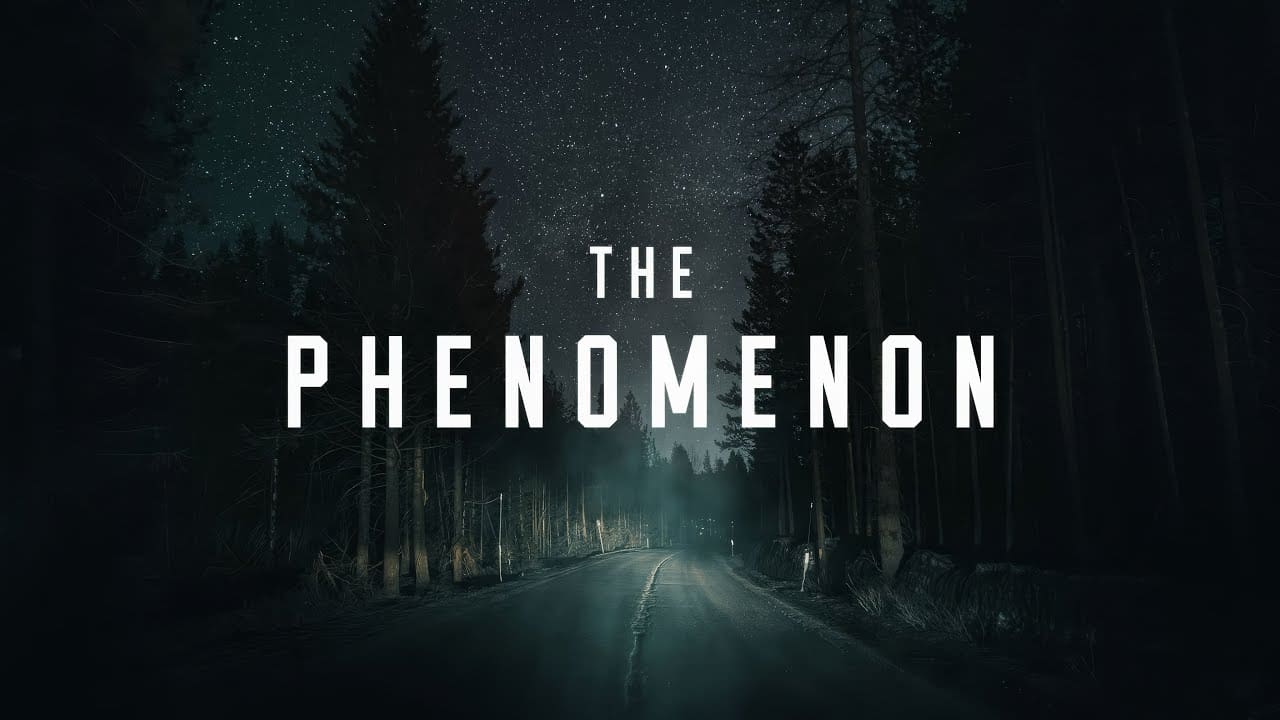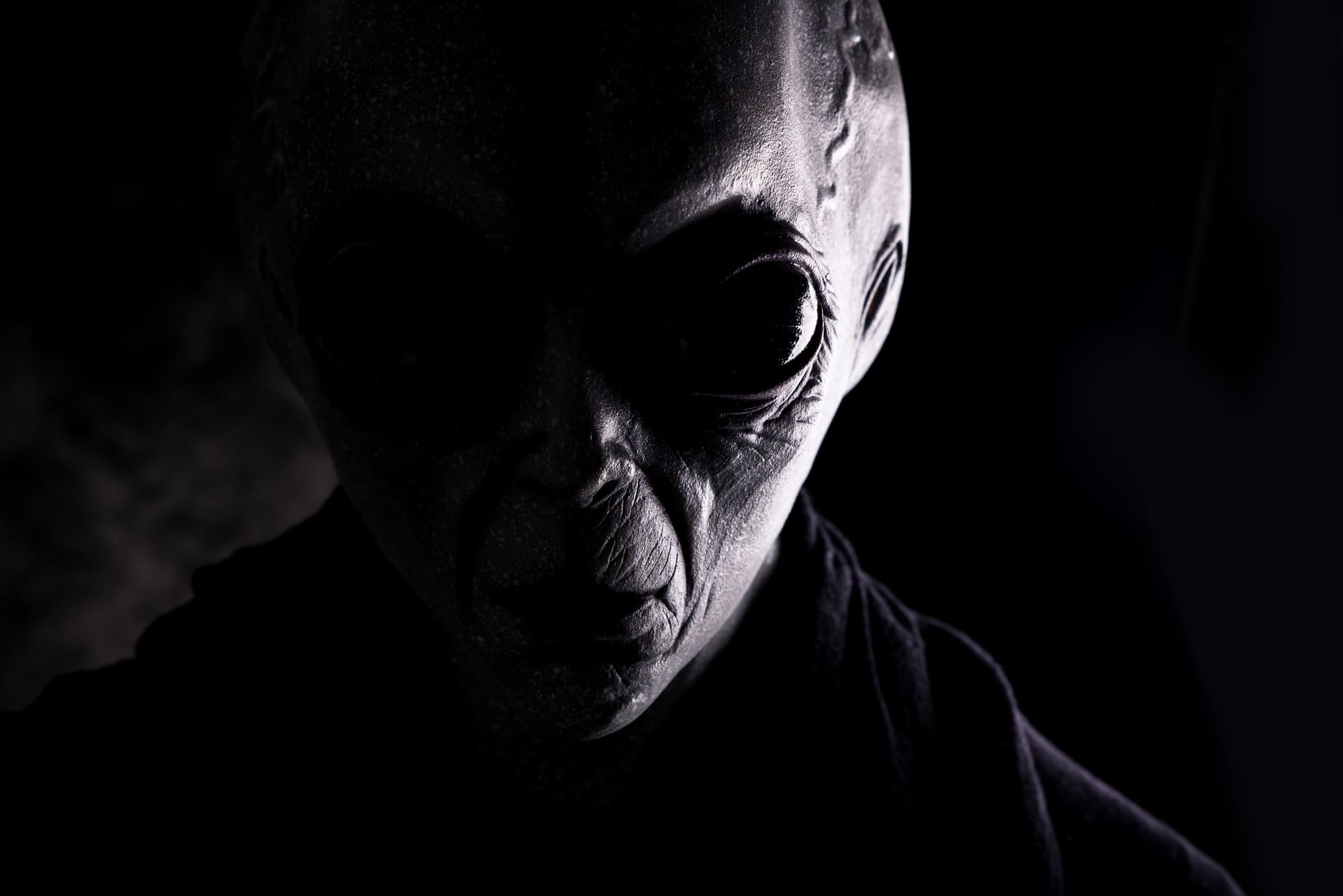From 1947 to 1969, the U.S. Air Force recorded 12,618 UFO sightings. Of these, 701 were still unexplained after Project Blue Book ended. This project, from 1952 to 1969, looked into UFOs. It’s a key part of UFO history and research.
Its findings and declassified documents have sparked debates. They touch on UFOs, national security, and the possibility of alien life. This makes Project Blue Book very important in UFO research.
Project Blue Book aimed to see if UFOs were a threat. The University of Colorado reviewed its records in 1969. The National Archives said Project Blue Book’s files were declassified in 1969.
This declassification has given us a closer look at the project. It shows how the government looked into UFO sightings and flying objects.
Key Takeaways
- Project Blue Book was a U.S. Air Force program that investigated UFO sightings from 1952 to 1969.
- A total of 12,618 UFO sightings were recorded by the U.S. Air Force from 1947 to 1969.
- 701 of these sightings remain classified as “unidentified” upon the conclusion of Project Blue Book.
- The project’s findings and the declassification of its documents have contributed to ongoing debates about UFOs and their potential implications for national security.
- Project Blue Book played a significant role in the history of UFO research and government investigations into UFO sightings.
- The project’s records and findings were reviewed by the University of Colorado in 1969, and the National Archives reported that Project Blue Book’s files were declassified in 1969.
- The declassification of Project Blue Book’s documents has provided valuable insights into the project’s operations and findings, shedding light on the government’s investigations into UFO sightings and unidentified flying objects.
The Origins of Project Blue Book
The history of Project Blue Book is tied to its predecessors, Project Sign and Project Grudge. These were the U.S. military’s first UFO studies. Captain Edward J. Ruppelt was key in making Project Blue Book a success.
Project Sign was the first to officially look into UFO sightings. It set the stage for future studies. Project Grudge, however, was more skeptical, with about 23% of reports unexplained. These experiences helped shape Project Blue Book.
Project Sign: The First Official UFO Study
Project Sign was started to study UFO sightings, with Captain Edward J. Ruppelt leading it. It began a systematic way to research UFOs. Ruppelt made reporting easier to help witnesses feel more comfortable.
Project Grudge: The Skeptical Years
Project Grudge took a more skeptical view of UFO sightings. Yet, it still gathered important data. About 23% of reports were unexplained. This project helped improve how UFOs were studied.
Transition to Project Blue Book
Project Blue Book started a new chapter in UFO research. Captain Edward J. Ruppelt introduced standardized questionnaires for witnesses. This made data collection better, leading to more understanding of UFOs.
The start of Project Blue Book shows how UFO research has grown. From Project Sign and Grudge to Blue Book, we see a shift towards a more systematic study. Captain Edward J. Ruppelt’s work is key to understanding UFOs today.
| Project | Duration | Notable Features |
|---|---|---|
| Project Sign | 1947-1949 | First official UFO study, systematic approach |
| Project Grudge | 1949-1952 | Skeptical approach, 23% of reports unexplained |
| Project Blue Book | 1952-1969 | Standardized questionnaires, statistical analysis |
Inside Project Blue Book’s Operations
The project blue book operations aimed to check out UFO sightings. They wanted to see if these sightings were a danger to national security. They looked at over 12,000 reports, sorting them into explained or unknown.
The military reports were key in this investigation. They gave important clues about the sightings. The goal was to understand UFOs and their possible threats to national security.
- Over 12,000 UFO sightings were reported and investigated between 1947 and 1969.
- Approximately 5.56% of the sightings remained unidentified.
- The project’s findings indicated that no UFO reported posed a threat to national security.
The ufo investigation process was very detailed. Investigators used many methods to collect and study data. This work was crucial for the US military to handle UFO sightings. Its results are still studied by researchers today.
Captain Edward J. Ruppelt’s Leadership and Vision
Captain Edward J. Ruppelt was key in shaping Project Blue Book’s UFO investigation methods. He led from 1951 to 1953, introducing revolutionary investigation methods. These methods were based on a scientific framework for analyzing UFO sightings.
This change was significant. Ruppelt aimed to distinguish between real and fake UFO reports. He wanted a deeper understanding of these sightings.
Ruppelt’s leadership made Project Blue Book a serious UFO investigation. He focused on ufo investigation methods based on science and reason. This approach helped build a scientific framework for UFO sightings.
Key Contributions
- Introduced revolutionary investigation methods for analyzing UFO sightings
- Developed a scientific framework for understanding UFO phenomena
- Worked to separate fact from fiction in UFO reports
Captain Edward J. Ruppelt’s work on Project Blue Book had a lasting impact. His dedication to scientific framework and ufo investigation methods set a new standard for UFO research. His work still inspires and guides researchers today.
The Investigation Process and Methodology
The ufo investigation process was detailed. It analyzed UFO sightings through interviews, physical evidence, and radar data. This helped figure out what each sighting meant. The project used a method based on a University of Colorado report and a review by the National Academy of Sciences.
Data analysis was key in this process. It helped spot patterns and trends in UFO sightings. The project used questionnaires to collect data. This included details like how long the sighting lasted, where it happened, and what it looked like.
Some important parts of the investigation were:
* Talking to witnesses for direct information
* Collecting and analyzing physical evidence
* Looking at radar data to track UFOs
* Analyzing data to find patterns
The project blue book method sorted sightings into groups. These included things like astronomical events, aircraft, and balloons. “Insufficient Data” and “Unidentified” were the last categories. Data analysis was crucial in sorting these sightings.
| Category | Description |
|---|---|
| Astronomical | Sightings that can be explained by astronomical phenomena |
| Aircraft | Sightings that can be explained by aircraft or other man-made objects |
| Unidentified | Sightings that cannot be explained by any known phenomenon |
Notable UFO Sightings and Investigations
Project Blue Book looked into many notable ufo sightings. Each case brought new challenges and insights into UFOs. These cases are interesting and show what UFO investigations were like back then.
The washington d.c. ufo incident is famous and has been studied a lot. Other famous cases include the lubbock lights and the socorro landing. They have sparked a lot of debate and investigation.
The Washington D.C. UFO Incident
This incident is a key example of a notable ufo sighting. It has been thoroughly investigated and discussed.
The Lubbock Lights
The lubbock lights are well-known and have sparked a lot of debate. They have been the focus of many investigations.
The Socorro Landing
The socorro landing is a major case that has been studied a lot. It is one of the most fascinating notable ufo sightings ever.
Analysis of the 12,000 Reports
Project Blue Book analyzed over 12,000 UFO reports. They found interesting patterns and trends. This helped us understand UFO phenomena better. UFO data analysis was key in this discovery.
Looking into the project blue book reports, many sightings had explanations. But, a big number didn’t. Out of 12,618 reports, 701 were still a mystery. This is about 5.55% of all reports.
Some important sighting patterns were found:
- Many sightings happened during busy times.
- Some areas had more UFO sightings than others.
- Reports from trusted witnesses, like military and police, were taken seriously.
The study of these reports greatly helped us understand UFOs. It showed the hard work needed to explain the unknown sightings. As the project went on, project blue book reports and ufo data analysis became vital. They helped uncover the truth behind these enigmatic events.
The Unexplained 700: Cases That Defied Convention
About 700 UFO sightings are still unexplained, making them a big challenge. They didn’t show any signs of aliens but still caught everyone’s attention. Scientists are trying hard to figure out what these sightings mean.
Looking closer, we find that 22 percent of UFO sightings are “unknown.” This means we can’t tell where they came from. This has led to many theories, from natural events to aliens. These ideas are causing a lot of debate among experts.
Most Compelling Unsolved Cases
Some of the most interesting cases come from military and pilots. These sightings are special because they have solid evidence. Scientists are working hard to solve these mysteries with new theories.
Scientific Analysis and Theories
Many theories have been suggested to explain these sightings. Some think it might be unknown natural events or advanced tech. Scientists keep studying and trying to come up with new ideas. They aim to understand these sightings better and uncover the universe’s secrets.
Who was J. Allen Hynek, and how did he become involved in Project Blue Book?

J. Allen Hynek was a famous astrophysicist who greatly influenced UFO research evolution. He started out skeptical but later changed his mind, shaping modern ufology. His work with Project Blue Book helped us understand UFOs better.
The project blue book purpose was to study UFO reports. Hynek’s knowledge was key to this effort. As he explored famous UFO cases, he realized they were more complex than expected. This shift was a big change in his career and how he viewed UFO research.
Evolution of Hynek’s Views on UFOs
Hynek’s journey from skepticism to leading UFO researcher was slow. His early work with Project Sign and Project Grudge prepared him for Project Blue Book. His lasting impact on UFO research shows his commitment and open-mindedness.
Official Conclusions and Public Response
The final report of Project Blue Book concluded that UFOs were not a threat to national security. It found no evidence of alien life. Over 12,000 UFO reports were investigated. The public response was mixed, with some accepting the findings and others doubting them.
The media coverage of these conclusions was widespread. Newspapers and magazines wrote about it. Some were critical, while others were more neutral. This coverage influenced how people saw UFOs and the idea of alien life.

The project’s results came from a detailed analysis of its data. Key findings included:
- No UFO reported was ever an indication of threat to national security
- No evidence indicated that “unidentified” sightings represented technological developments beyond modern scientific knowledge
- No evidence indicated that unidentified sightings were extraterrestrial vehicles
Today, the project’s conclusions and the public’s reaction to them are still discussed. Its legacy is seen in ongoing UFO sightings and investigations. Media coverage of these events continues to shape public opinion on UFOs and alien life.
Declassified Documents: What They Reveal
The release of project blue book files has given us new insights. It shows how the project worked and what it found. This openness is a big step towards government transparency. Now, the public can see declassified ufo documents that were once secret.
Some important facts from these documents are:
- The total number of UFO sightings reported to Project Blue Book: 12,618
- The number of sightings that remained “unidentified”: 701
- The percentage of sightings that remained “unidentified”: approximately 5.56%
These numbers give us a peek into the project’s size and the tough job of its investigators. The declassified ufo documents also show why government transparency is key to understanding UFOs.
As we keep looking into the project blue book files, we might learn even more. The push for government transparency is a positive move. It lets us see declassified ufo documents and dive deeper into this intriguing subject.
Impact on Modern UFO Research
Project Blue Book’s work has greatly influenced today’s UFO research. Its methods and discoveries guide current studies. Many groups and governments still look into UFO sightings.
The project’s impact is clear in today’s UFO research. Many studies use its findings and methods. Government programs also use its insights in their UFO research.
Some notable examples of modern ufo research initiatives include:
- The Advanced Aerospace Threat Identification Program, which was established in 2007 to investigate UFO sightings
- The Pentagon’s Unidentified Aerial Phenomena Task Force, which was established in 2020 to investigate UFO sightings
These efforts show how Project Blue Book’s work still matters today. It shapes how we study UFOs now.
In conclusion, Project Blue Book’s influence on UFO research is clear. Its methods and discoveries guide today’s studies and government programs. As we delve into UFO mysteries, Project Blue Book’s legacy will keep playing a key role.
| Year | Number of UFO Sightings |
|---|---|
| 1947 | 122 |
| 1952 | 1,501 |
| 1969 | 12,618 |
Conclusion: The Legacy of Project Blue Book
Project Blue Book ended in 1969, leaving a lasting impact on UFO studies. It made progress in understanding these phenomena but faced ongoing challenges. The project’s work, though sometimes unclear, greatly helped UFO research.
The project blue book legacy is complex. The Air Force said there was no alien technology evidence, sparking debates. Yet, the project’s database and declassified files are key for researchers today.
Project Blue Book’s main impact is its push for more scientific study and public talk. It has inspired ongoing searches for UFO answers. The insights from this project continue to influence our understanding of the world.
FAQ
Q: What was the purpose of Project Blue Book?
A: Project Blue Book was the U.S. Air Force’s official program to study UFO sightings. It aimed to see if UFOs were a threat to national security. The project also analyzed UFO sightings scientifically.
Q: How did Project Blue Book evolve from earlier UFO investigation programs?
A: It came from earlier programs, Project Sign and Project Grudge. These programs had different views on UFOs. Captain Edward J. Ruppelt helped make the project more serious and open-minded.
Q: What was the investigation process and methodology used by Project Blue Book?
A: Investigators looked at many types of data, like witness statements and radar. They tried to explain UFO sightings. The goal was to use science in these investigations.
Q: How did Captain Edward J. Ruppelt’s leadership shape the direction of Project Blue Book?
A: Ruppelt’s new ways of investigating and his focus on science helped make the project credible. This made it a serious study of UFOs.
Q: What were some of the most notable UFO sightings investigated by Project Blue Book?
A: The project looked into famous cases like the Washington D.C. UFO incident and the Lubbock Lights. These cases got a lot of attention from the public and media.
Q: How did the analysis of the 12,000 UFO reports collected by Project Blue Book contribute to our understanding of the phenomena?
A: By studying 12,000 reports, the project found patterns. This helped them understand UFOs better, even if many cases were still a mystery.
Q: What were the most compelling unsolved cases from Project Blue Book, and how did scientists try to explain them?
A: About 700 UFO sightings, known as the “Unexplained 700,” were never explained. Scientists still debate these cases, with some thinking they might be from aliens.
Q: How did J. Allen Hynek’s involvement in Project Blue Book shape our understanding of UFOs?
A: J. Allen Hynek started skeptical but became more open-minded. His work helped make UFO research more accepted by science and the public.
Q: What were the official conclusions of Project Blue Book, and how did the public respond to them?
A: The project said most UFO sightings were explained. But, the unexplained cases made people doubt the government’s explanations. This debate about aliens continues.
Q: What have the declassified documents related to Project Blue Book revealed?
A: Declassified documents show more about UFO sightings and the government’s UFO research. They’ve sparked new discussions about UFOs and their possible impact on our world.
Q: How has Project Blue Book’s legacy influenced modern UFO research and government programs?
A: The project’s methods and findings have shaped today’s UFO research. Its legacy keeps the public and scientists interested in solving the mystery of UFOs.
Source Links
- https://www.britannica.com/topic/Project-Blue-Book – Project Blue Book | Definition, History, Aliens, UFOs, & Facts | Britannica
- https://abc7.com/the-black-vault-project-blue-book-declassified-freedom-of-information-act/483352/ – Man releases 130K pages of declassified Air Force documents on UFOs
- https://www.history.navy.mil/browse-by-topic/disasters-and-phenomena/u2s-ufos-and-operation-blue-book.html – U-2s, UFOs, and Operation Blue Book
- https://en.wikipedia.org/wiki/Project_Blue_Book – Project Blue Book
- https://www.history.com/topics/folklore/project-blue-book – Project Blue Book ‑ Alien, Definition & Files | HISTORY
- https://www.esd.whs.mil/Portals/54/Documents/FOID/Reading Room/UFOsandUAPs/proj_b1.pdf?ver=2017-05-22-113513-837 – PDF
- https://documents.theblackvault.com/documents/fbifiles/bluebook.pdf – Project Blue Book (UFO) part 1 of 1
- https://www.biography.com/scientists/j-allen-hynek – J. Allen Hynek – Project Blue Book, Quotes & Facts
- https://journalofscientificexploration.org/index.php/jse/article/download/496/321 – JSE 262online.indd
- https://enigmalabs.io/library/c68b0efb-98cc-4cb5-ae8d-dce8c265be0b – Edward James Ruppelt – First Director of Project Blue Book | Enigma Lab










